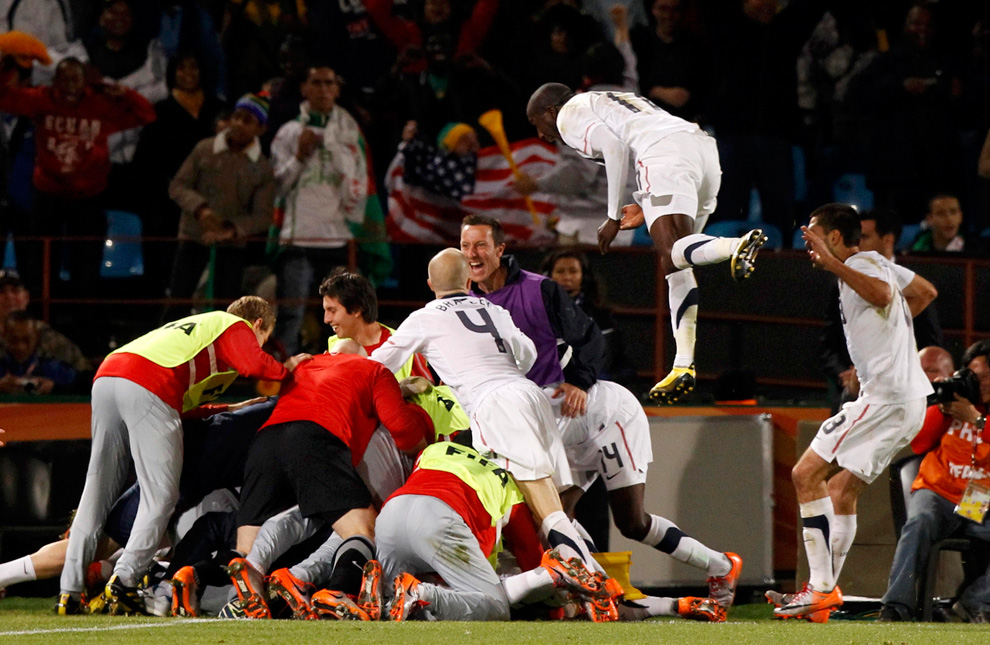Whether you like it or not, U.S. Soccer and MLS are always linked together, often times as one entity. This of course, is not true. U.S. Soccer is a governing body, they run the national team as well as nearly every league from the youth level on up. MLS is a professional league, sanctioned by U.S. Soccer, but otherwise completely separate from it.
There’s no doubt that the two entities have overlapping interests. Both want to grow the game of soccer in the United States as much as possible and neither one would be as successful as they currently are without the other one. But the fact remains they are still two mutually exclusive entities that ultimately have different core interests at heart, especially when it comes to the US national team.
This is where things get tricky. MLS commissioner Don Garber has a seat on U.S. Soccer’s executive board and therefore is technically one of the bosses of whoever the U.S. Soccer manager is. That’s a problem.
As MLS commissioner, Garber’s job is to look out for MLS’ best interests. As manager of U.S. Soccer, Bruce Arena’s (or whomever is filling that position) job is to compete with the world’s best. At times that shows off the talent that MLS is producing, but at times it may have nothing to do with MLS, and that needs to be acceptable as well.
Both U.S. Soccer and MLS are where they are because of each other. U.S. Soccer gets a lot of benefit from having a professional league that develops American players, and MLS gets a lot of benefit from the popularity the U.S. teams generates every four years in the World Cup.
In 2014, MLS made a new effort to capitalize on that effort by spending big money to sign USMNT players who had become household, and thus marketable, names during the World Cup. This strategy is fine for players who are what they are and aren’t developing anymore such as Graham Zusi, Jermaine Jones, or Matt Besler (who had developed interest from European clubs).
This strategy may put fans in the seats but it can also be a double edge sword. Among the U.S. players who signed with MLS after the World Cup was the younger Mix Diskerud, who has since seen his career development come to a sudden halt and is no longer a viable option for the USMNT.
That’s where the U.S. could run into problems. MLS wants to sign the household names and market them. Their interest is making money. But the USMNT’s main interest are in player development, and while MLS has been perfectly capable of developing role players for the national team, the best players, save for Landon Donovan, have typically turned into the best players by playing in Europe.
With the popularity that the U.S. team has gotten, players like Jordan Morris and Gyasi Zardes become marketable stars for MLS, and therefore the league can be reluctant to sell them. That’s already become an issue for Zardes, who broke into the scene in 2015, garnered interest in Europe, but stayed in MLS and has seen his development plateau.
This is why the U.S. manager has to not only have complete autonomy over his roster decisions, but be able to speak freely, without MLS making a big deal about it. Every time a U.S. roster is announced, U.S. Soccer makes it a point to let us know how many players are from MLS. It shouldn’t be this way. If a manager wants to drop a player because the manager feels that MLS isn’t challenging the player (similar to what Italy did with Sebastian Giovinco – which didn’t seem to trip them up at Euro 2016) he should be able to do that.
After all, MLS gets their biggest bumps in interest following the World Cup. But what if the U.S. crashes out of the World Cup in the group stage, or even worse doesn’t make it? What if no new players become household names and MLS doesn’t see a bump in interest? That’s not good for anyone.
It’s in MLS’ best interest for the USMNT to have the best players possible and remain as popular as ever, and they should be trying to help them in that regard. That doesn’t mean that the entire U.S. team should be made up of players from Europe. If an MLS player is one of the 23 best players, he should no doubt be in the squad.
U.S. Soccer and MLS are not enemies, but they’re not the same institution either. They can and should be helping each other, but unfortunately right now, they aren’t. The sooner this changes, the better off everyone will be.






